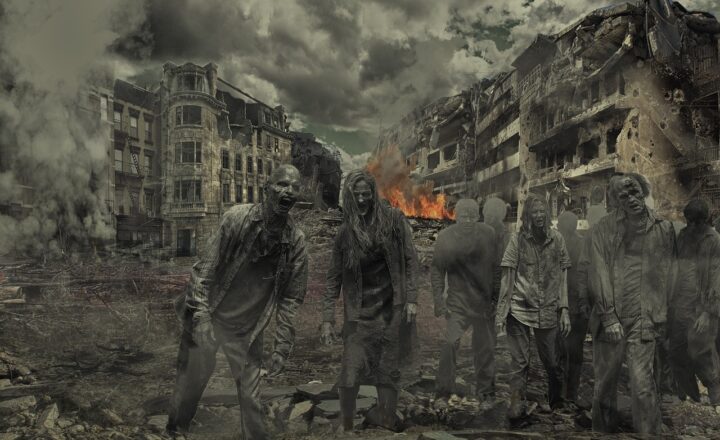The Evolution of Horror Literature: From Gothic to Modern Thrills
November 11, 2024

Horror literature has long been a popular genre, captivating readers with its ability to evoke fear, suspense, and unease. Over centuries, horror has evolved significantly, beginning with the Gothic literature of the 18th century and transforming through various movements to the modern psychological thrillers we see today. This article will explore how horror literature has developed, the influences that shaped it, and its relevance in contemporary culture.
1. The Birth of Gothic Horror
The origins of horror literature can be traced back to the late 1700s with the emergence of Gothic fiction. This genre was characterized by its dark themes, mysterious settings, and supernatural elements. Key elements of Gothic horror included ruined castles, gloomy landscapes, and secrets lurking in the shadows.
One of the seminal works of this genre was Horace Walpole’s “The Castle of Otranto” (1764), which set the stage for countless future works of horror. This novel featured elements such as ghostly apparitions and a sense of dread, encapsulating the essence of Gothic horror. Following Walpole, authors like Ann Radcliffe, Edgar Allan Poe, and Mary Shelley further advanced Gothic literature with their contributions. Shelley’s “Frankenstein” (1818) not only introduced themes of reanimation and moral consequences but also explored the complexities of humanity and the unknown.
Thus, Gothic literature laid the groundwork for the horror genre, combining thrilling narratives with philosophical questions about human nature and the human experience.
2. Victorian Horror: The Psychological Perspective
As the 19th century progressed, horror literature took a new direction with the advent of Victorian horror. This period saw a profound interest in psychology and the darker aspects of the human mind. Influential authors began to delve into the psychological impacts of fear, abnormality, and societal taboos.
A prime example of this evolution is Bram Stoker’s “Dracula” (1897). This novel not only brought forth the iconic character of Count Dracula but also examined themes of sexuality, fear of the unfamiliar, and the fragility of civilized society. Through its exploration of the subconscious and repressed desires, “Dracula” remains a cornerstone of horror literature.
Moreover, the works of supernatural horror authors like M.R. James and Sheridan Le Fanu introduced chilling ghost stories, creating a genre that focused on spectral intuitions and strange occurrences.
3. The Early 20th Century: Horror and the Modernist Movement
The early 20th century marked another significant transformation in horror literature. As modernism emerged, it brought new feelings of dislocation, anxiety, and alienation that resonated deeply in horror fiction. Writers began to experiment with narrative structures and dissect the duality of human existence.
H.P. Lovecraft revolutionized horror with his Cosmic Horror philosophy, where the universe is inherently indifferent and incomprehensible to humanity. His iconic Cthulhu Mythos expanded the boundaries of horror, invoking feelings of dread fueled by existential terror. Lovecraft’s influence still permeates contemporary horror literature and films.
This was also the era of psychological horror, highlighted by works like Franz Kafka’s “The Metamorphosis” (1915). Kafka’s story about a man transforming into an insect explores themes of isolation and absurdity, pushing readers to confront their psychological fears.
4. Post-War and Contemporary Horror Literature
The horrors of World War I and World War II introduced new layers of complexity to horror literature, leading to reflections on trauma, loss, and societal collapse. The mid-20th century witnessed a boom in horror fiction, with authors like Shirley Jackson, Stephen King, and Clive Barker bringing fresh narratives that examined the human condition through the lens of fear.
Shirley Jackson’s “The Haunting of Hill House” (1959) explores the psychological effects of fear within the context of a haunted house. This novel is timeless in its exploration of mental illness and the impact of trauma on perception. Similarly, Stephen King’s expansive catalog of novels, from “Carrie” to “It,” introduced relatable characters facing unimaginable horrors, thereby merging emotional complexity with engaging narratives.
In recent years, horror literature has continued to thrive, morphing and adapting to societal shifts. From the rise of diverse voices in horror fiction to the incorporation of social and political themes, contemporary horror reflects current anxieties while maintaining its roots in the exploration of fear.
5. Horror in the Digital Age
With the advent of the internet, horror literature has found new platforms for expression. Social media, web series, and podcasts have allowed authors to share their work with wider audiences. Digital print-on-demand services and self-publishing have also democratized the publishing industry, enabling diverse voices to contribute to the genre.
Modern horror literature often blurs the lines between genres, incorporating elements of fantasy, science fiction, and psychological thriller. The rise of authors like Tananarive Due and Carmen Maria Machado exemplifies the genre’s evolution, emphasizing the interplay between horror and broader societal experiences. Their works delve into themes like race, identity, and the repercussions of historical trauma, showing that horror can serve not just to frighten, but to challenge and illuminate societal constructs.
Moreover, the influence of multimedia on horror has never been more prominent. With popular adaptations of horror novels into films and series—such as Netflix’s “The Haunting of Hill House”—these narratives transcend the page and engage audiences in innovative ways, enriching the experience of horror.
Conclusion: The Enduring Nature of Horror Literature
Horror literature has undergone substantial changes since its inception, evolving creatively alongside societal shifts and cultural revolutions. From the eerie atmospheres of Gothic novels to the introspective explorations of modern works, horror reflects humanity’s deepest fears, anxieties, and desires.
Today, horror remains a vital genre, continually adapting to the complexities of the human condition and social realities. As new voices emerge and innovative narratives unfold, we can expect horror literature to keep pushing boundaries and exploring the darker sides of existence, ensuring its relevance for generations to come.







